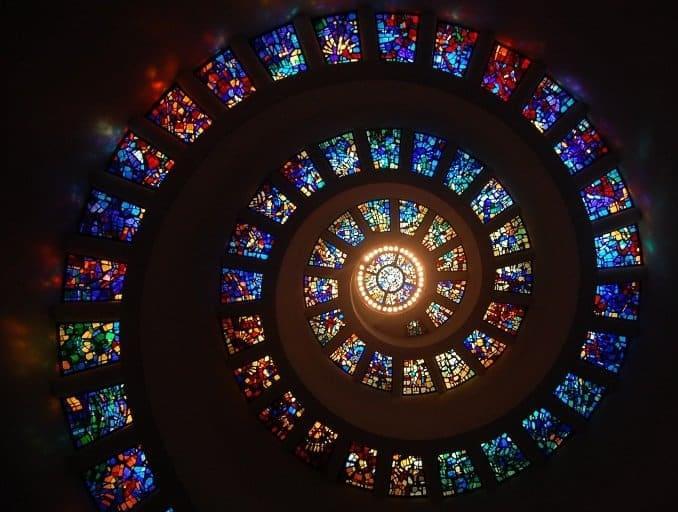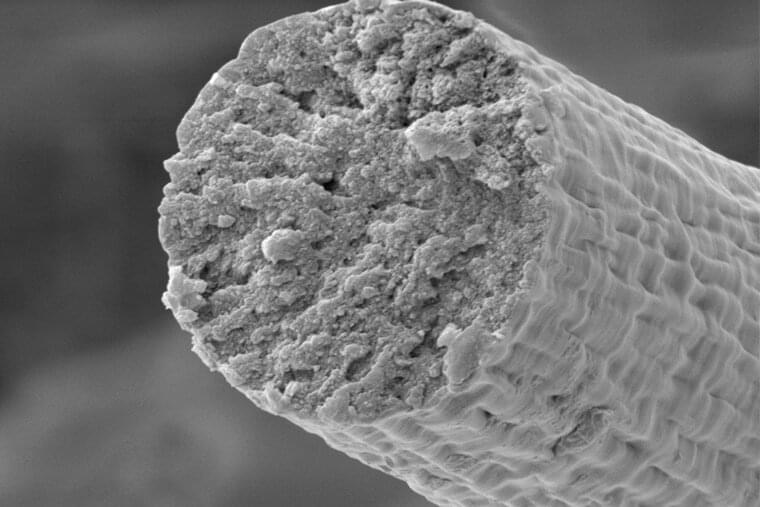A global microchip shortage has kept car prices high all year. Now, chip manufacturers are warning that it may not get better next year.



Summary: Researchers find a region of the brain stem called the periaqueductal gray may mediate religiosity and spirituality in humans.
Source: Elsevier.
Scientists have long suspected that religiosity and spirituality could be mapped to specific brain circuits, but the location of those circuits remains unknown. Now, a new study using novel technology and the human connectome, a map of neural connections, has identified a brain circuit that seems to mediate that aspect of our personality.

I believe the transduction theory has a great deal to offer in our scientific study of the mind–brain relationship. It is, of course, a dualist theory. It provides a framework for understanding the close link between brain states and mental states, yet at the same time, it explains mental states in a way that does not invoke nonsensical materialist metaphysics.
A successful understanding of the mind–brain relationship will necessarily involve understanding the brain as a transduction device in one way or another. Such an understanding could prove enormously fruitful and can help us move beyond the current materialist framework in which neuroscience is practiced, which has has held us so far back in our understanding of the mind and the brain. The brain is obviously material but it is just as obvious that the mind has immaterial abilities.
We accept that the ear is a transducer for sound to hearing and the eye is a transducer for light to vision. It is reasonable to infer that the brain is a transducer for thought to body. Transduction theory is a plausible approach to understanding the connection between the mind and the brain. It should be taken seriously by neuroscientists and philosophers of the mind.

As the middle child of the “DNA to RNA to protein” central dogma, RNA didn’t get much press until its Covid-19 vaccine contribution. But the molecule is a double hero: it both carries genetic information, and—depending on its structure—can catalyze biological functions, regulate which genes are turned on, tweak your immune system, and even crazier, potentially pass down “memories” through generations.
It’s also frustratingly difficult to understand.
Similar to proteins, RNA also folds into complicated 3D structures. The difference, explain Drs. Rhiju Das and Ron Dror at Stanford University, is that we comparatively know so little about these molecules. There are 30 times as many types of RNA as there are proteins, but the number of deciphered RNA structures is less than one percent compared to proteins.

South Korea’s parliament has approved a bill that will make it the first country to impose curbs on Google and Apple’s payment policies that force developers to only use the tech giants’ proprietary billing systems.
The legislation will become law once signed by President Moon Jae-in, whose party has been a vocal supporter of the bill.
Apple and Google’s policies usually require developers to pay the tech giants a commission as high as 30% of every transaction.

A good start if you are a sufferer. There are many studies and trials for working toward a cure. Keep searching.
Aug. 20 (UPI) — Antibody therapy may help prevent the development of celiac disease, the digestive disorder that limits the body’s ability to process foods that contain wheat, barley and rye, a study published Friday by Science Immunology found.
The approach uses specially modified monoclonal, or laboratory-created, antibodies that prevent the human immune system from recognizing gluten, a protein found in these foods, as a toxin, the researchers said.
This means that T cells, which, like antibodies, are cells created by the immune system to fight off invading diseases or toxins, will not respond to gluten and allow the body to digest or process it, according to the researchers.

Two young visually impaired Southampton fans were finally able to be mascots and watch their beloved Saints in action against Manchester United at the weekend thanks to life-changing wearable technology provided by Virgin Media.
Florence and Joshua both experience issues with their eyesight, meaning that they have never been able to clearly see their favourite team play. Back in March 2,020 Virgin Media gave them cutting-edge technology before they were due to take on the role of mascots for the game against Manchester City.
Quantum mechanics generally refers to the wave-like properties of things that are commonly considered to be particles, such as electrons. This article discusses evidence of a quantum mechanical switching function that is performed by strictly biological structures—ferritin protein layers that are found in cells including neural tissue.
Many scientists are investigating quantum biology, which is the application of quantum mechanics to investigate biological functions. It has recently been used to answer a number of previously unanswered questions, such as the mechanisms behind photosynthesis and the way birds can perceive magnetic fields. These quantum biological effects generally involve electrons hopping or tunneling over distances of several nanometers, behavior that is incompatible with particles but which makes sense with waves.
Ferritin is a spherical iron storage protein that is found in plants and animals. Early studies of ferritin to look for quantum mechanical effects were conducted at cryogenic temperatures, because it was thought that biological structures were too “warm and wet” to exhibit such effects. Those studies were somewhat inconclusive. But when ferritin was subsequently electrically tested at room temperature, it was discovered that electron tunneling was occurring.

Science from industry, federal agencies and independent researchers now links 6:2 FTOH to kidney disease, cancer, neurological damage, developmental problems, mottled teeth and autoimmune disorders, while researchers also found higher mortality rates among young animals and human mothers exposed to the chemicals.
Experts previously considered food and water to be the two main routes by which humans are exposed to PFAS, but the study’s authors note that many humans spend about 90% of their time indoors, and the findings suggest that breathing in the chemicals probably represents a third significant exposure route.
“It’s an underestimated and potentially important source of exposure to PFAS,” said Tom Bruton, a co-author and senior scientist at Green Science.
PFAS, or per-and polyfluoroalkyl substances, are a class of about 9,000 compounds used to make products water-, stain-or heat-resistant. Because they are so effective, the chemicals are used across dozens of industries and are in thousands of everyday consumer products such as stain guards, carpeting and shoes. Textile manufacturers use them to produce waterproof clothing, and they are used in floor waxes, nonstick cookware, food packaging, cosmetics, firefighting foam and much more.

Would you wear clothing made of muscle fibers? Use them to tie your shoes or even wear them as a belt? It may sound a bit odd, but if those fibers could endure more energy before breaking than cotton, silk, nylon, or even Kevlar, then why not?
Don’t worry, this muscle could be produced without harming a single animal.
Researchers at the McKelvey School of Engineering at Washington University in St. Louis have developed a synthetic chemistry approach to polymerize proteins inside of engineered microbes. This enabled the microbes to produce the high molecular weight muscle protein, titin, which was then spun into fibers.